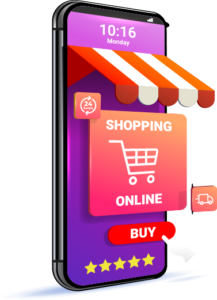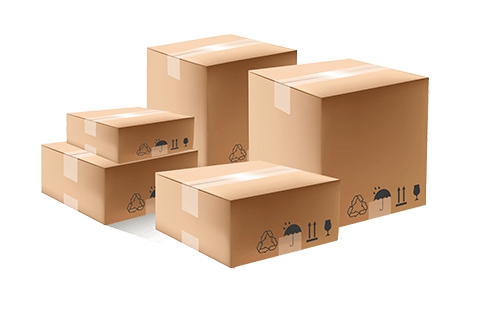How to start an e-commerce Business in India in 15 steps
e-commerce is the short form of electronic commerce. In simple terms e-commerce business means buying and selling of products or services using internet. It also involves transfer of funds to execute the transactions.
The e-commerce industry is witnessing a tremendous growth in India backed by the increasing internet penetration. In this article, we discuss the steps for starting a successful e-commerce business in India.

STEP 1: How to choose a product for your e-commerce business
The primary step in starting any e-commerce business to start researching about the product you want to sell. Research about products you are passionate about. You can either manufacture a product or you may buy and resell the product. You must have specialist knowledge about the products you are researching.
Ensure that the chosen product shall address the pain point of a customer. Use platforms like Quora, Reddit etc to understand the customer pain point. The solution for the pain point is your product or services.
You shall identify your product either as premium or non-premium. If your product is a premium one, you shall have to present it in an attractive way. By looking at the product image, customer should identify the same as a premium product.
The conclusion is that, if your product is a result of a novel idea, then your competition is less but you will have spent for educating the audience about the product. On the other hand, if you choose a generic product, then you will have to face the market competition.
STEP 2: How to create Your eCommerce Business Plan
Once you have chosen the product, the next step is to formulate a vision for your company. The vision statement of a nutraceutical company shall be “ To manufacture and market food supplement which is made from 100% natural materials for building a healthy community”
Once your company-level vision is finalized, you will have to create the department-level plans. Start with creating the Marketing Plan. Forecast the number of units to be sold on monthly basis.
Then create your raw material purchase plan based on the sales forecast. Your purchase plan should consider the expenses incurred which sourcing the materials.
Once you have forecasted your sales quantity and raw material purchase quantity, work out your Finance Plan. The finance plan should ideally include your projected profit and loss account and projected balance. Ensure that you have a weekly Working Capital Projection. Most of the business fail due to lack of working capital management.
Make a plan for Human Resources. Estimate the number of staffs required to manage various departments of the business. Plan the workforce needed to manufacture the product.
After finalising the business plan, do a SWOT analysis of the same. SWOT stands for Strength, Weakness, Opportunities & Threats. Compare the Strength and Weakness of your products in relation to your competitor’s product. Gather information about the opportunities and threats present in the market in relation to the chosen product.
STEP 3: How to create your e-commerce financial plan
During this stage, your Business plan is transformed into a Financial plan, where the plan is represented in Rupee terms.
Create your Sales Budget by getting the projected sales quantity from the business plan and multiply the same with the selling price per unit.
Obtain the raw materials quantity from the purchase plan. Get quotations from the suppliers for the raw materials. You then arrive at the Purchase Budget. Consider the raw material transportation cost, insurance cost, loading and unloading cost, etc during the Purchase Budget creation.
Create your Expenses budget by estimating the monthly recurring expenses like Rent, Salary, Office Expenses, Social Media Advertisement, Online Sales Promotion, etc
Once you have budgeted the sales, purchase and expenses, you shall arrive at the budgeted profitability for a month.
Make a list of all assets to purchased. Get quotation for equipments, furniture, electrical fittings, Online Store Creation, etc. Estimate the capital, borrowed capital, bank loan, etc to be raised. You shall arrive at the Budgeted Balance Sheet.
Your business plan will get more visibility at this stage.
STEP 4: How to select a Business Structure for e-commerce business
If you are the only one raising the capital and managing the business, you can start the business without any legal documents. This form of business is Sole Proprietorship.
But, if you are plan to start the business with your friends or relatives, you shall have to form a Partnership firm. Approach a Chartered Accountant to make a Partnership deed where the profit sharing ratio, etc shall be mentioned.
Partnership firm shall either be an Enterprise or an LLP (Limited Liability Partnership). In case of Enterprise, the liability of the partner is not limited to the firms assets. LLP as the name suggests, the liability is limited to the net worth of the firm.
If you and your partners plans to raise funds from the market by way of issuing shares, you may opt for a Pvt Limited Company. In this case you shall need Incorporation Certificate, Memorandum of Association, Article of Association, etc to kick start your business.
STEP 5: How to set up an e-commerce business
Your planning related tasks should have completed by now and you start setting up your business based on the plans.
Choose a name for your business. Business name is the registered name in your Partnership Deed, in case of a Partnership firm. It shall be an Incorporation Certificate if you are registering your business as a Pvt Ltd Company.
Choose brand name for your business. Brand name could be different from your business name and it is more customer centric. Your marketing campaigns revolves around your brand name. Let us say your company name is ABC & Sons and Healthify could be your brand name.

Choose an attractive tagline for your brand and design a logo for your brand. Organize the various department and identify the roles and responsibilities within each department.
STEP 6: How to obtain Licenses for e-commerce business
The license requirement depends upon the nature of business. If you are starting a Food Business, you shall require the following licenses.
Obtain the Sanitary Certificate from Public Heath Centre. You business premises shall be audited by an inspector and the certificate will be issued by the department.
Once you obtain the Sanitary Certificate, apply for license from the local administration – Panchayat, Municipality, etc.
Obtain a GST Number. Approach a GST consultant and submit the required documents. GST Number shall be issued within a weeks time. It is not mandatory to obtain GST Number to start your business.
Approach a FSSAI consultant for obtaining the FSSAI license.
Apply for Packers License from Legal Metrology Department. This license is compulsory, if you company is packing the product. If another company is producing the product under your brand name, then Packers license is mandatory for you.
STEP 7: How to price an ecommerce product
Your pricing strategy can make or break your ecommerce business. Using the right pricing strategy for your ecommerce business can grow your revenue. An ecommerce pricing strategy depends on the target customer and their purchasing power.
Cost-Plus pricing is the most straight forward pricing strategies for a new ecommerce business. In this type of pricing, you add up the cost of raw materials, labour and other fixed expenses per product. Let us say, if the total cost per product is Rs. 50. Most of the ecommerce business put a profit margin of 100% on cost. So, the selling price per product shall be Rs. 100.
Competition based pricing is mostly used for commodities where we offer better pricing that our competitors. So we adjust our profit based on the competitors price.
Value based pricing strategy depends on the maximum amount, a customer is willing to pay for the product. Such pricing strategy is used for premium products. In Value based pricing, customer focus more on the quality of the product, eco-friendly, etc
STEP 8: How to identify the Target Customer for e-commerce business
In order to market your products online, we need to know our target customers very well, just as you know your neighbours and friends. You have to identify the specific types of people who are most likely to purchase your products. Do not attempt to sell your products to everybody, you end up selling the products to nobody.
You shall have to create a Customer persona based on the customer demographics and their interests. Customer Persona represents the type of customer. This is also known as Customer Avatar or Ideal Customer Profile. If your products are made to different type of customer you shall have more than one Customer Avatar.
Identifying your target customer starts with analysing the customer demographics like Age, Sex, Income, Qualification, Location, etc. You should also know the customer hobbies, their motivators, social media platforms they use, etc. These parameters shall be considered while running paid Ads in social media and Google.
Once we know who our target customers are, we can create customised messages that speak to their specific requirements. Create Ads which are unique to your customer, thereby getting the right clicks to your Ads. This ultimately reduces your advertisement cost and increases your conversion rate.
STEP 9: How to design your Product Creatives for e-commerce business
Create product photos & videos for our e-commerce website and social media promotions. We shall source the photos from the manufacturers and suppliers. Ensure that the sourced photos are of higher quality. If you are into retail fashion store, you can opt this method. Most of the manufactures already have the product photos. If this can be done, you can definitely save some amount.
If the photos cannot be sourced, then we shall have to take our own photos. Hire a photographer to take your own pictures. Ensure that you have good DSLR camera with proper lighting without shadows. Most of the product photos are taken with white background. Ensure that the background of the product photos are consistent.
Make sure that the photos sourced or taken are of high quality. Improve the product photos by having a rotating set, means taking pictures from different angles. You shall have to edit the photos for better look. Remove the background and sharpen the pictures. Resize the photos to have uniform dimensions.
We have to optimize the photos for fast loading online. Add Alt text to photos to improve the image SEO optimization.
STEP 10: How to package an e-commerce product
Packaging has become just as important as the product in delivering a first impression to the customer. The right e-commerce packaging helps your business stand out from the competition.
Brands have now started to showcase their creativity and brand identity by customizing the shipping boxes. Custom packaging can help you create a strong brand identity that’s sure to impress your customers. At very low quantities, consider standard sized packaging options with inexpensive customized additions.

Ensure that the product is well protected, especially in case of glass bottle packed items. Well protected products add significant value to your brand. The is no risk of refund and exchange.
From a marketing standpoint, e-commerce ready packaging provides a lot of return if you make the proper investments. Provide a meaningful unboxing experience for customers that they will always remember. This is vital for building brand image with customers.
STEP 11: How to identify the platform for creating Your Online Store
Shopify is a Canadian company that provides web applications to start a new online store. Shopify powers more than half-a-million businesses globally. It offers fully hosted solutions, which means you don’t have to worry about installing updates, managing software, or taking backups. Shopify is my choice for creating your e-commerce website.
BigCommerce offers the best website builders software. It comes with fully functional e-commerce building solutions and a host of other essential features.
Magento is an e-commerce website platform owned by Adobe that specializes in e-commerce websites. Magento users have access to hundreds of unique features that help them connect with their customers and sell their products.
When people think of making a website, the first option that comes to their mind is always WordPress. WordPress is still the best website builders that offers plethora of plugins and tools to customise your website. More than 39% of websites on the internet are powered by WordPress. We can create an e-commerce store in WordPress using the woocommerce plugin.
Dukaan and Digital Showroom have recently entered the e-commerce website builder space.
STEP 12: How to setup a online store in Shopify
The first step towards setting up of a Shopify store is to sign in and create a Shopify account. Choose an unique name for your store.
Next step is to add products to your Shopify store. Enter the Product name, description, price, offer price, etc. You have option to bulk upload all the products from the excel sheet (CSV file).
Customize the look of your shopify website. Create product collection to attract the customer. A number of free and premium website Themes are available. You can customize the Fonts, Colour schemes, product appearance, etc. You can tweak the chosen Themes by creating custom CSS codes.

Optimize the website for mobile devices. Use an SEO plugin to optimize your website for search engines. Paid and Free SEO plugins are available in Shopify.
Once you have completed the site design, setup your domain with Shopify. You can either buy a new domain from Shopify or transfer an existing domain to Shopify. You will need to update the DNS record if you are transferring an existing domain name.
Activate your Payment Processor. Shopify is integrated with all the major payment gateways like razorpay, paytm, etc. Most payment gateways charge you a small transaction fees, which is generally a percentage of selling price.
Install the Facebook Pixel and Google Analytics for tracking the website visitors. You shall use this information for remarketing thru Facebook Ads and Google Ads.
STEP 13: How to ship an e-commerce product
Unlike other online software solutions like WooCommerce, Shopify has arrangements with many shipping carriers and courier companies. This will help Shopify customers to reduce the product shipping cost. Once you receive the customer order, you can choose the delivery partner who pick up and home deliver the product to the customer.
The three main product despatching methods in Shopify are shipping, local delivery and local pickup. Your business can use any of these methods to deliver your products. If your delivery area is with 10km range, you only need local delivery or local pickup delivery methods enabled.
Shopify allows you to automatically calculate the shipping rates for your products. Shipping labels are printed without using additional plugins. The customer can track the delivery status of the product from shopify store.
STEP 14: How to market your online store
Email is one of the most effective marketing tools for your online website, so make sure that you keep collecting email addresses on your site. Use pop-up boxes to prompt users to enter their email addresses in return for a small promotion like 15% off their first purchase.
Use email marketing application like KLAVIYO to create email sequences. KALVIYO is the leading e-commerce marketing platform for Shopify. You can send personalised emails, SMS messages, signup forms, etc using this application.

Take every opportunity to boost your social media engagement. Use your Instagram channel to showcase your products. Other great ways to leverage social media are giveaways, working with bloggers and influencers who are active in your niche. Invest your time in creating rich visual content for social media. Use appropriate hashtags.
Optimize your on-page content for Search Engines. On-page content refers to product titles and descriptions, images, blogs, etc. Make sure that our content naturally uses language which matches your customers search intend. We shall use the language which the customers would use, when they search for related products.
You need content to market your products. Creating content about the products is a great way to bring traffic to your website. Provide helpful information that improves your brand value.
Advertise on Google and social media platforms like Facebook and Instagram. You can use photos and videos in your ads. A photo ad can be a great way to get your product in front of new people.
Influencers are people who have large online audiences and can influence the purchasing behaviour of the audience. Working with the right influencer can get your product in front of a huge number of potential customers. Ensure that the influencers following aligns with your target audience.
WhatsApp is a powerful tool to connect with your audiences. ZOKO is a powerful WhatsApp marketing tool, which has seamless integration with Shopify. Just like you create email sequences in email marketing tools, you can create WhatsApp sequences in ZOKO.
STEP 15: How to do marketing analytics for your online store
You want to know which marketing channels is giving you more revenue. The goal of every Digital Marketing Analytics is to understand the effectiveness of the marketing campaigns.
Most of the business follow an integrated digital marketing, where we have more than one marketing channels to generate revenue. The marketing channels used for generating revenue for your online store is the e-commerce website, email marketing, social media marketing, search engine optimization, etc.
Each marketing channels shall have multiple marketing campaigns. In case of Email Marketing, we usually run campaigns like product promotion campaigns, newsletter campaigns, cart abandonment campaigns, etc.
For us to perform data analysis, we must first understand the metrices or parameters for measuring the data. Marketing metrices are values used to measure the effectiveness of marketing campaigns.
The metrices pertaining to these marketing channels will vary. Some of metrices pertaining to Email Marketing are Open Rate, Bounce Rate, Click Through Rates, Open by Devices and Unsubscribe Rates.
Use tools like Google Analytics, Facebook Insights, Instagram Insights, etc to analyse the marketing campaigns.
Conclusion
In this age of competition, it is not an easy task to run an e-commerce business in India. The key to ecommerce success is about deeply understanding the customer. By targeting the right customers, you reduce the ad spend and increase the conversion.
About the Author

Joshi Rabiyath
I am a Digital Marketer, currently run a Digital Marketing Agency. Please check the Digital Marketing Services offered by us. I write about Social Media Marketing, Affiliate Marketing, Content Marketing, etc.